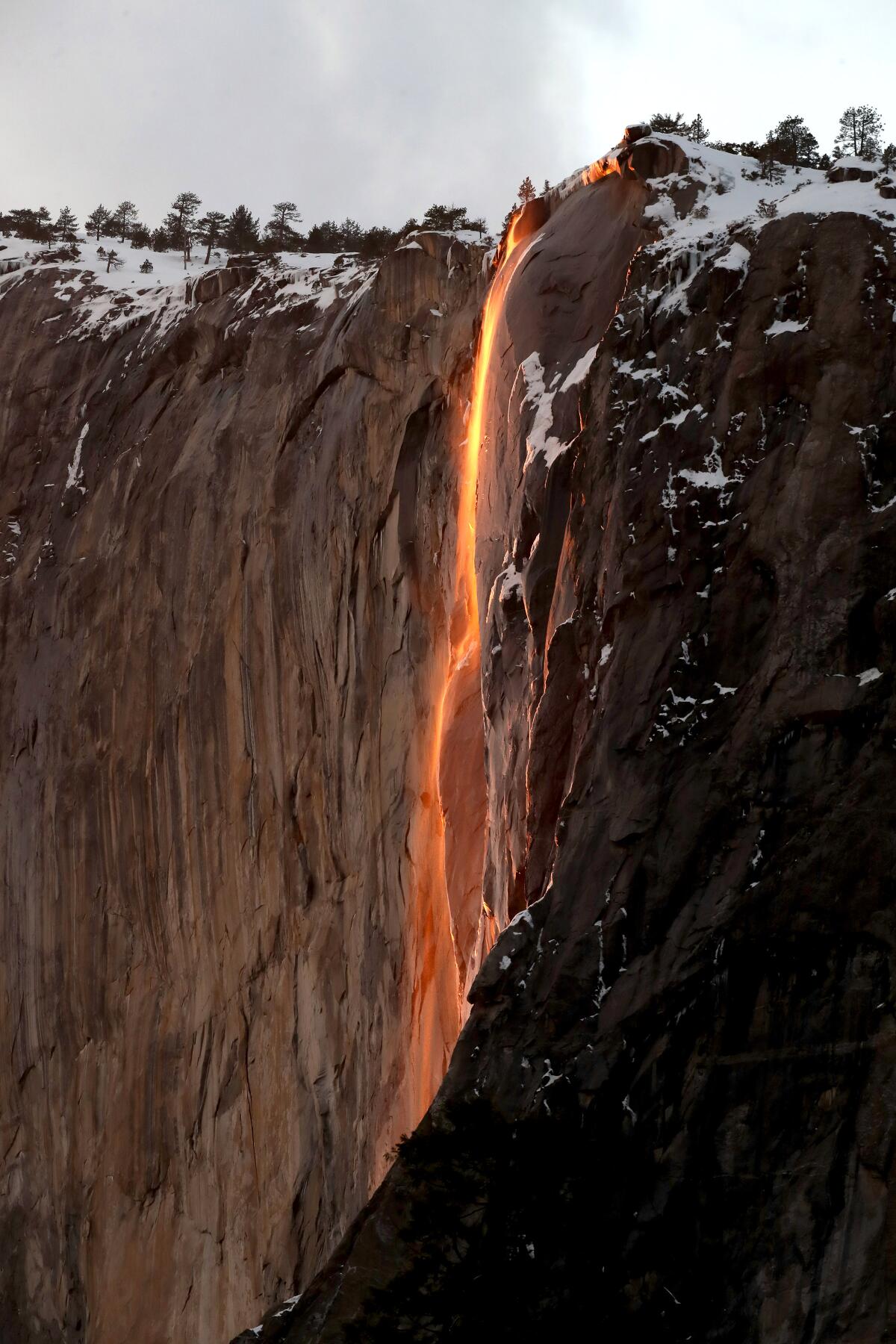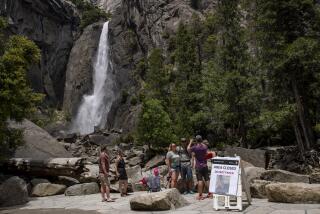Want to see Yosemite’s glowing ‘firefall’? Park reservations are open now

- Share via
A chance to see the natural “firefall” glow in Yosemite National Park in mid-February requires patience, clear skies, water, the right weather conditions — and now a day-use reservation. For at least the month of February, the park is requiring all day visitors to make advance reservations. The park started taking reservations at 8 a.m. Monday, and passes are expected to go quickly.
Each year thousands are drawn to see the light phenomenon that looks like orange lava flowing down the 1,575-foot Horsetail Fall on the east side of El Capitan. It only lasts a few weeks.
Anyone planning to visit the park between Feb. 8 and Feb. 28 (see best firefall dates below) needs to make a reservation at recreation.gov. You won’t be allowed into the park after Feb. 8 without one; this applies to pass holders too. Reservations are free, but there’s a $2 handling fee. You still pay $35 per carload to enter for seven days. Travelers with reservations at a campground or lodge don’t need to make a day-use permit.
Get The Wild newsletter.
The essential weekly guide to enjoying the outdoors in Southern California. Insider tips on the best of our beaches, trails, parks, deserts, forests and mountains.
You may occasionally receive promotional content from the Los Angeles Times.
What if you miss out on getting a reservation today? The park is releasing 80% of the reservations Monday and will release another 20% day by day, 48 hours ahead of time. So mark your calendar if you want to visit during the best sunset times to see the firefall.
Photographer Aaron Meyers has shot the natural phenomena many times. Every year he predicts when conditions will be best. According to aaronmphotography.com’s forecast, the best time to see the light glow on Horsetail Fall is 5:28 to 5:40 p.m. on Feb. 21. Times around sunset between Feb. 18 and Feb. 23 are good too.
There are no guarantees when it comes to seeing the sunset light that looks like orange lava flowing down Horsetail Fall. Conditions have to be just right. For starters, there has to be water flowing in the fall. Then skies must be crystal clear, even a slight haze or passing cloud can ruin the effect. But in a good year, just before and after sunset, the waterfall’s rock faces can glow like they’re on fire.
The park, coping with storm damage and COVID-19, says it is a temporary measure.
Firefall became popular after photographer Galen Rowell snapped a shot of the glowing image in 1973. It was nicknamed firefall. The name is a throwback to an old Yosemite tradition in which park concessionaire employees would tip glowing embers off Glacier Point to entertain visitors. The man-made firefall ended in 1968, but the natural one continues to fascinate visitors, especially photographers looking for the perfect shot.
Yosemite reopened Monday after windstorms and snowstorms caused damage in the park. Fifteen giant sequoias in the Wawona area were toppled in high winds. The park brought back the day-use reservation system to help limit crowds during the ongoing COVID-19 pandemic and during cleanup of roadways.
More to Read
Sign up for The Wild
We’ll help you find the best places to hike, bike and run, as well as the perfect silent spots for meditation and yoga.
You may occasionally receive promotional content from the Los Angeles Times.








